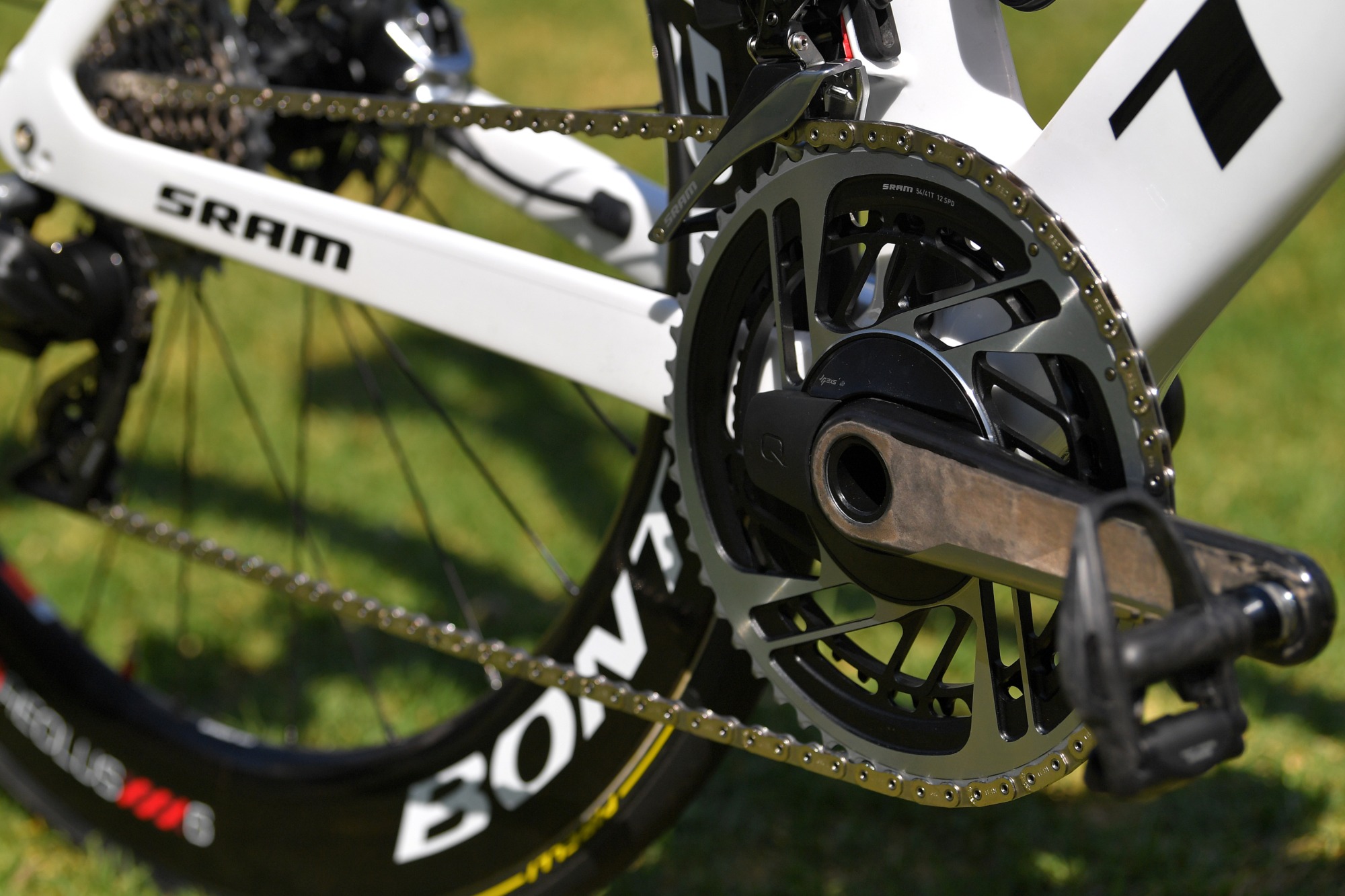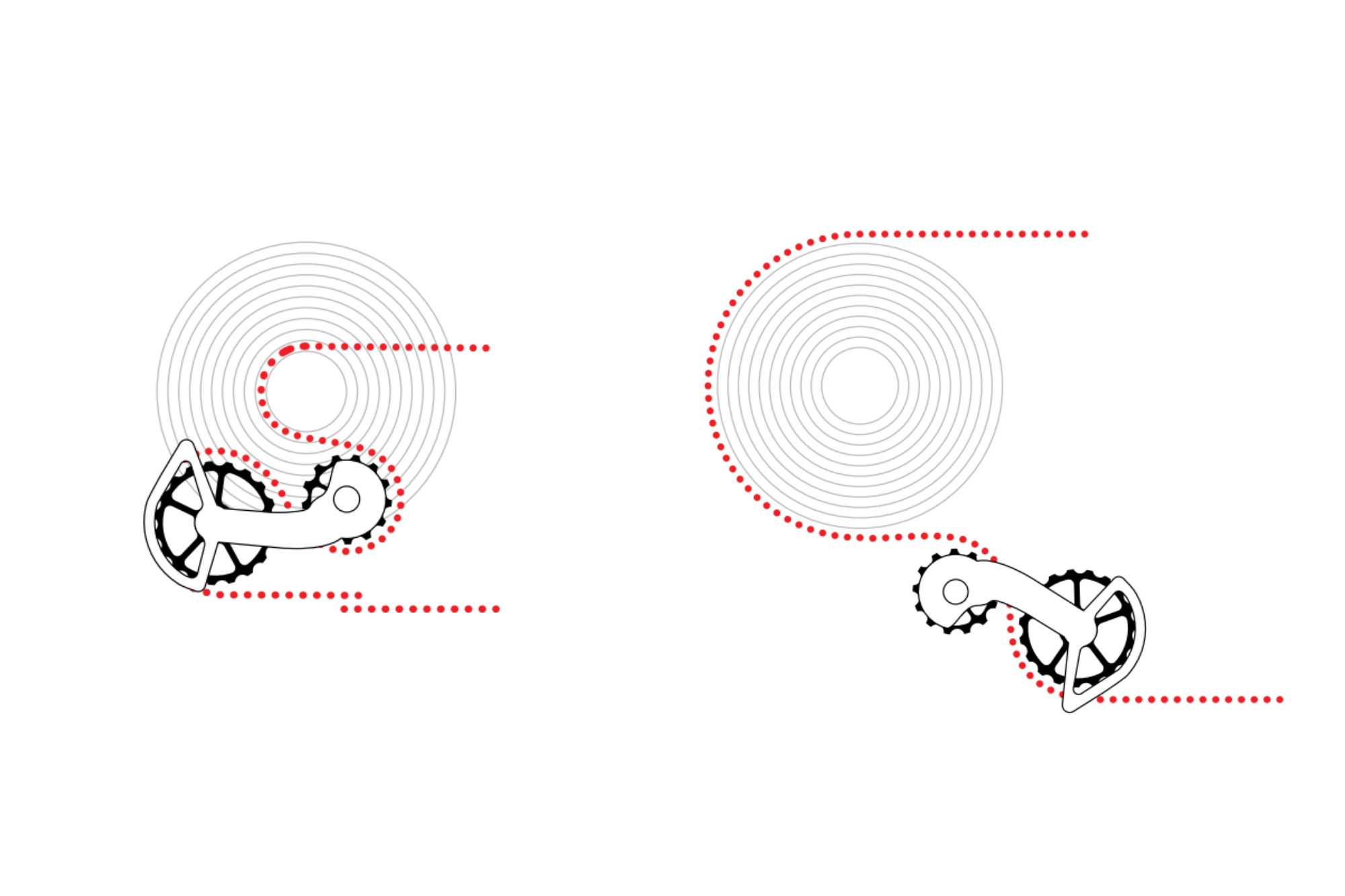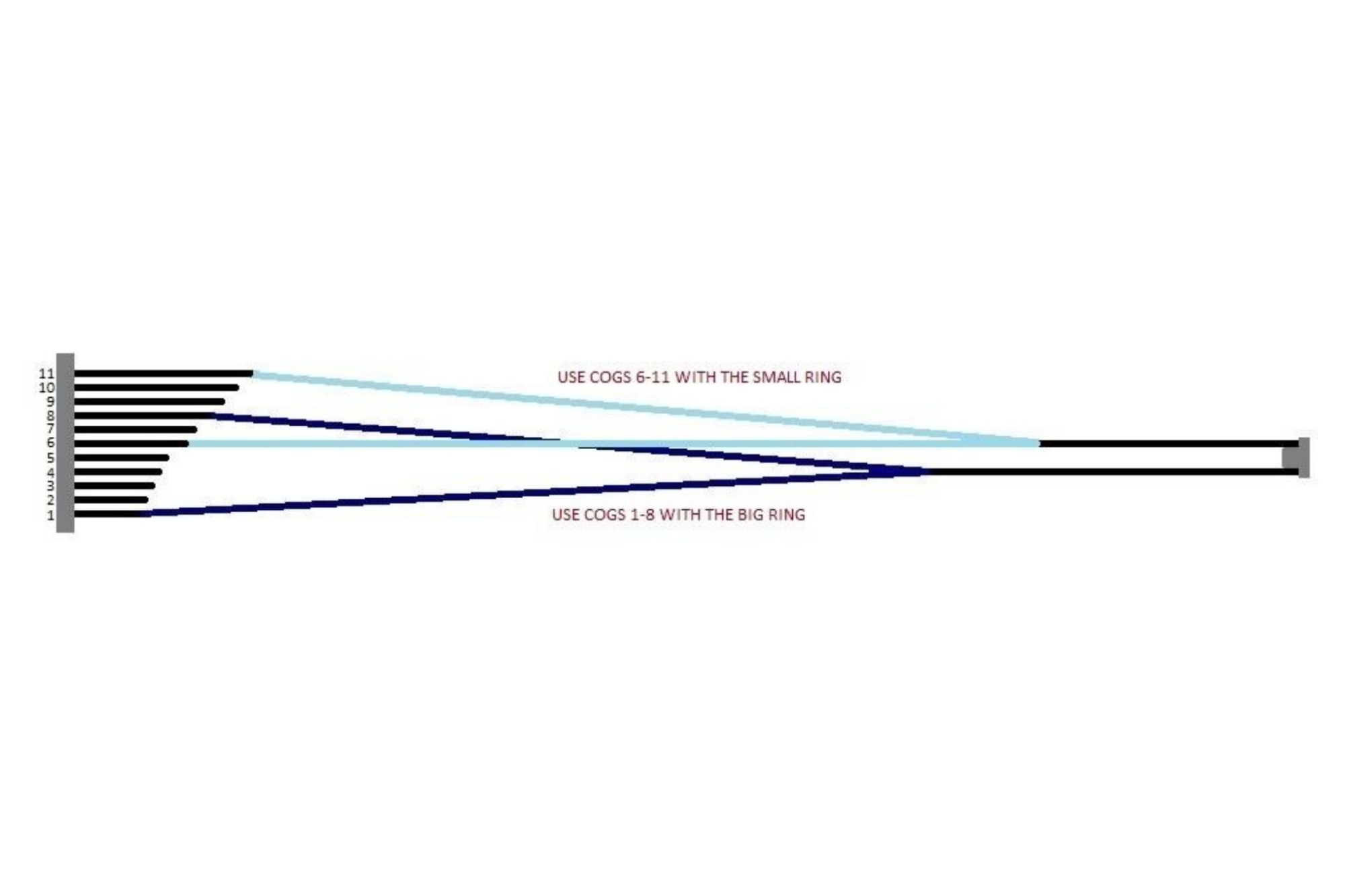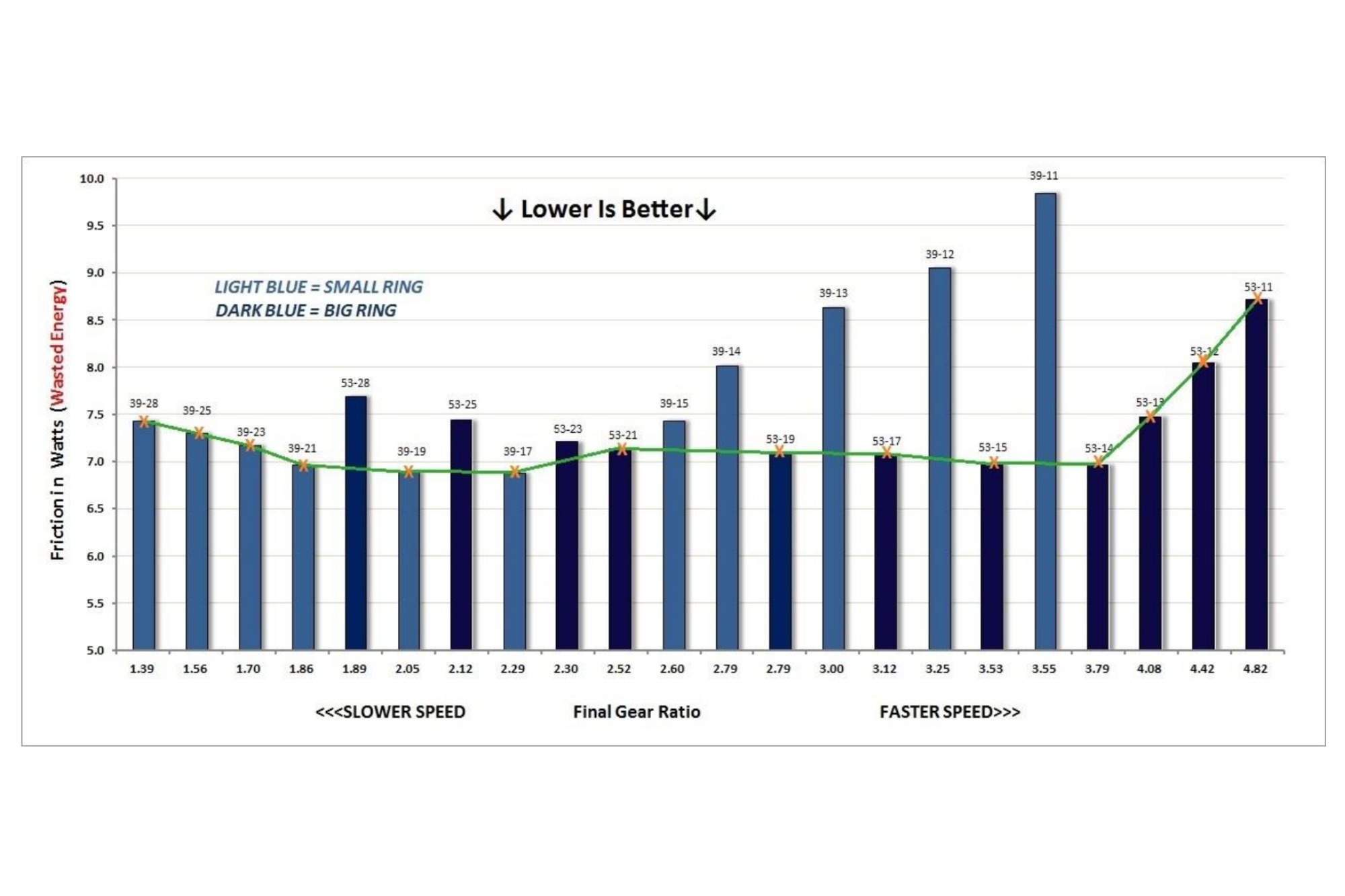Should you run larger chainrings?
Just how much more efficient are bigger rings and can they benefit non-professionals?


To give a little context, for a few years now, SRAM has offered 12-speed road groupsets which include a diminutive 10-tooth smallest sprocket. This allowed smaller chainrings to be used while still providing similarly high gears compared to standard setups.
However, some pro teams were reticent to move onto the smaller rings and stuck steadfastly to their traditional 53/39 cranksets – most notably Trek Segafredo. Responding to this, SRAM recently released three new cranksets, with big rings that span from 52 teeth right up to 56.
For those abreast of their ratios, all this might strike as a little odd. SRAM’s previous largest gear of 50x10 was identical to 55x11 – which some pros do use, but the majority seem perfectly happy to stick with the smaller 53x11.
With this latest update, SRAM’s largest gearing combination is now equivalent to a whopping 62x11!
All of which begs the questions, why this sudden drive for bigger gears and are there any benefits mere mortals might reap from these larger chainrings?
Drivetrain efficiency, not top speed
Strong though the pros are, it seems unlikely that their fitness would have taken such a leap in recent years that these new, massive gears are now a necessity.
Even for those who would be able to turn such gears, it wouldn’t be in their interest to. Air resistance increases with speed in a non-linear fashion – the faster you go, more energy that’s required to increase the speed further. It’s much more efficient to save some energy on the speedier sections and go harder on the hills and into the headwinds.
Get The Leadout Newsletter
The latest race content, interviews, features, reviews and expert buying guides, direct to your inbox!
We spoke to Paul Sollenberger from CeramicSpeed, and he confirmed that the pros’ predilection for bigger chainrings is centred on increasing drivetrain efficiency by reducing chain articulation – rather than desire for a higher top-end.

Now, there are two forms of chain articulation relevant here. The first regards how the chain wraps around the sprockets – a smaller sprocket means the chain has to bend more tightly and this greater movement means more friction has to be overcome.

The second regards how much the chain has to flex laterally, an extreme example is when you’re in the big chainring and the largest sprocket on the cassette – the chain is having to bend sideways at quite an extreme angle to accommodate this. But even when in the big ring and smallest sprocket, the chain is still having to bend a substantial amount to enable this combination.
Addressing the first form of chain articulation, SRAM product manager Brad Menna highlights that this was taken into account when designing the AXS groupsets with that 10-tooth smallest sprocket. The Flattop chains are made with larger rollers than traditional 11-speed chains and SRAM says that this has the result that a 48x10 gear combination on their 12-speed system is actually more efficient than a 53x11 (the actual ratios are similar between these two combinations).
When testing this with a KMC chain as a control, Ceramic Speed found that the 10-tooth sprocket was actually 7 watts less efficient. However, one would expect SRAM to respond that you wouldn’t get those losses with a flattop chain, but CermaicSpeed hasn’t done that particular test just yet.
Pro gearing
But that’s almost beside the point, the issue is more that small sprockets far outboard are much less efficient than the larger sprockets which are more directly in line with the big chainring. Whether that smallest sprocket is 10 or 11 teeth doesn’t really matter, as ideally you wouldn’t be in it anyway.
Friction Facts has done did a lot of testing with 11 speed drivetrains. So, this isn’t directly applicable to the 12-speed SRAM system, but it would be fair to assume that the broader points still apply.

From this chart, you can see that the drivetrain losses really start to ramp up once you enter into the three smallest sprockets of the cassette – the final one costing nearly two watts more than the 4th one previous.
It’s clear to see that equipping a larger chainring so that less time is spent in these three gears would be more efficient.
Potentially, this could make SRAM’s new gearing option of a 56/43t chainring paired to a 10-33t cassette the ideal gearing setup for the pros
The larger chainring means less time would be spent in the three gears furthest outboard from the spokes. While at the other end, a 43x33 combination is pretty much the same as 39x30, providing ample range for most stages.
The 10-tooth sprocket even ends up playing a useful role by effectively shuffling some of the other sprockets down the block a little – the 13-tooth sprocket ending up with a slightly straighter chainline in a SRAM AXS setup than in an 11-speed Shimano drivetrain.
Everyday gears
Not only are professional cyclists incredibly strong, but they also reap the sizable drafting benefits of riding in such a large peloton. If you tend to ride by yourself – and even if you ride in a group – the speeds that you’ll be spending the majority of your time at will be significantly lower than that of the pros.
Most likely, you’ll have a pretty straight chainline with an outer chainring of 48 or 50 teeth. Going larger in this instance would just increase the shifting you have to do at the front and provide minimal gains.
But also don’t discount the benefits of the 46 tooth chainring option. When paired to a 10-tooth sprocket, this gives a top gear a little larger than 55x12, so you won’t be in too much danger of spinning out. With a 10-33 tooth cassette, you can effectively treat this drivetrain as a 1x, using the inner ring just as a bailout option for obscenely steep hills and recovery rides.
It’s a pretty fun way to ride, and when we’re talking differences of only a couple of watts, you could well be better off taping up your helmet vents and enjoying the shifting simplicity.
But then again, you could always whip out the tape and attach some larger rings…

Thank you for reading 20 articles this month* Join now for unlimited access
Enjoy your first month for just £1 / $1 / €1
*Read 5 free articles per month without a subscription

Join now for unlimited access
Try first month for just £1 / $1 / €1

After winning the 2019 National Single-Speed Cross-Country Mountain Biking Championships and claiming the plushie unicorn (true story), Stefan swapped the flat-bars for drop-bars and has never looked back.
Since then, he’s earnt his 2ⁿᵈ cat racing licence in his first season racing as a third, completed the South Downs Double in under 20 hours and Everested in under 12.
But his favourite rides are multiday bikepacking trips, with all the huge amount of cycling tech and long days spent exploring new roads and trails - as well as histories and cultures. Most recently, he’s spent two weeks riding from Budapest into the mountains of Slovakia.
Height: 177cm
Weight: 67–69kg
-
 A bike rack with an app? Wahoo’s latest, and a hub silencer – Sea Otter Classic tech highlights, Part 2
A bike rack with an app? Wahoo’s latest, and a hub silencer – Sea Otter Classic tech highlights, Part 2A few standout pieces of gear from North America's biggest bike gathering
By Anne-Marije Rook
-
 Cycling's riders need more protection from mindless 'fans' at races to avoid another Mathieu van der Poel Paris-Roubaix bottle incident
Cycling's riders need more protection from mindless 'fans' at races to avoid another Mathieu van der Poel Paris-Roubaix bottle incidentCycling's authorities must do everything within their power to prevent spectators from assaulting riders
By Tom Thewlis